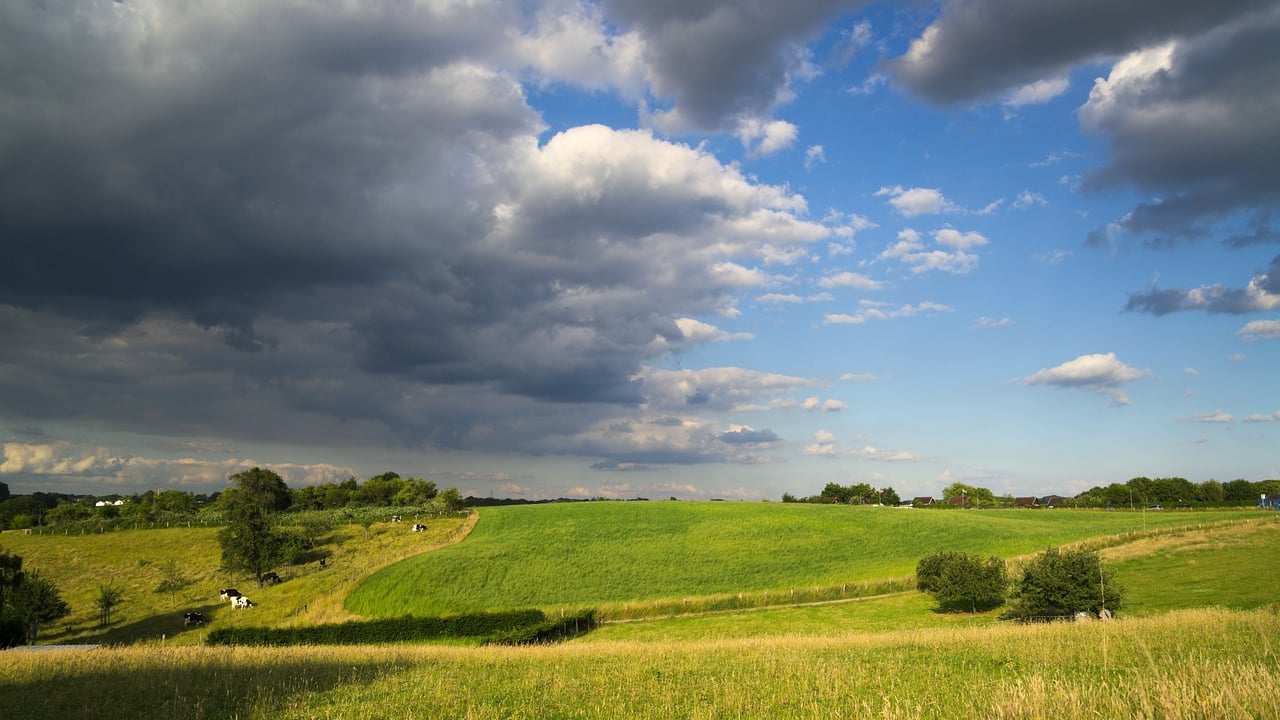April was 3rd warmest on record since 1900
Last month was the third warmest April on record since 1900 and the warmest since 2011 according to Met Éireann's provisional Climate Statement for April 2025.
The average national temperature for April 2025 was 10.6°C, which is 1.72 °C above the most recent 1991-2020 long-term average (LTA) and 2.5° above the 1961-1990 LTA.
The warmest April remains in 2011 (14 years ago) with an average temperature of 11.23° and the coldest April remains in 1922 (103 years ago) with an average temperature of 5.45°.
Provisional gridded rainfall data suggests April 2025 averaged at 95.9mm (118% of the 1991-2020 LTA or 122% of the 1981-2010 LTA).
The wettest April was in 1966 (59 years ago) and the driest April was in 2017 (eight years ago).
Met Éireann said that April was a month of contrasts. The first two weeks of April 2025 were dominated by high pressure over or to the north of Ireland.
This kept it mostly dry in a predominantly easterly airflow, with plenty of sunshine. It became gradually warmer, especially in the midlands and west.
The settled spell broke down on Sunday April 13 as Atlantic weather fronts pushed across the country from the west, introducing a cooler westerly airflow with outbreaks of rain or showers.
This marked the beginning of a cooler and wetter couple of weeks where Atlantic low pressure dominated and brought numerous spells of heavy rain, especially to the midlands, south, and east.
The first day with heavy rain came on Wednesday, 16 April, as a wraparound occluded front, associated low pressure that moved north from the Bay of Biscay towards Wales, stalled over the eastern half of the country.
More widespread heavy rain came on Friday 18 and Saturday 19 as low pressure, which stalled to the south, pushed active weather fronts north over the country, with the heaviest rain over parts of the south.
This was followed by further bands of rain or showers, sometimes heavy, up to Saturday, April 26, when high pressure to the east began to take control once again.
The final four days of the month were dominated by high pressure to the east. This along with warm air advection from the south, which passed over sea surface temperatures that were much warmer than average for the time of year, led to record breaking maximum temperatures for this time of year being reported on the final day of the month.
According to Met Éireann, the majority of monthly rainfall totals were above their 1991-2020 LTA. Percentage of monthly rainfall values ranged from 83% (the month’s lowest rainfall total of 61mm) at Sherkin Island, Co. Cork to 172% (the month’s highest rainfall total of 110.4mm) at Roches Point, Co Cork.
The month’s wettest day was also recorded at Roches Point, Co. Cork with 44.5mm on Friday 18 (its 2nd highest daily rainfall total for April on record (length 20 years) behind 49.8 mm, which fell on April 15, 2019).
The number of rain days ranged from 10 days at Shannon Airport, Co. Clare to 17 days at Sherkin Island, Co Cork.
The number of wet days ranged from eight days at Shannon Airport, Co. Clare to 13 days at both Valentia Observatory, Co. Kerry and Belmullet, Co. Mayo.
The number of very wet days ranged from two days at Moore Park, Co. Cork to five days at both Johnstown Castle, Co. Wexford and Mount Dillon, Co. Roscommon.
Shannon Airport, Co. Clare and Mount Dillon, Co. Roscommon had their wettest April since 2009, while Phoenix Park, Co. Dublin and Dunsany, Co. Meath had their wettest April since 2012.
Knock Airport, Co. Mayo, Mount Dillon and Gurteen, Co. Tipperary all had their wettest April day on record on Friday 18 (record lengths between 17 and 28 years).
Shannon Airport, Co. Clare had its wettest April day since 1978, Mullingar, Co. Westmeath had its wettest April day since 1991 and Newport, Co. Mayo had its wettest April day since 1999, all on Friday 18, while Casement Aerodrome, Co. Dublin had its wettest April day since 2002 on Wednesday 16.
Six stations, mostly in the east, had dry spells between March 28 and April 14 lasting between 15 and 18 days.
One station, Casement Aerodrome, Co. Dublin, had a partial drought lasting 29 days ending on April 12. Dunsany, Co. Meath saw 14 consecutive dry days (0.0mm) between Sunday, March 30 and Saturday, April 12, inclusive.





